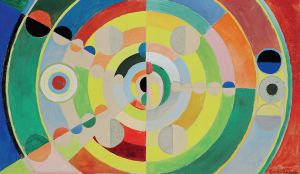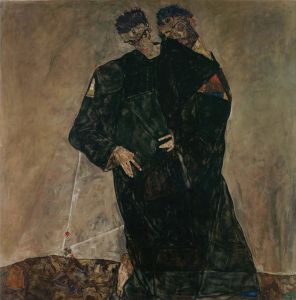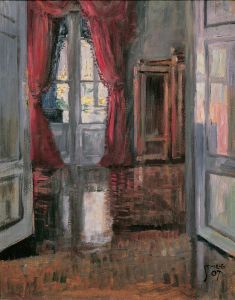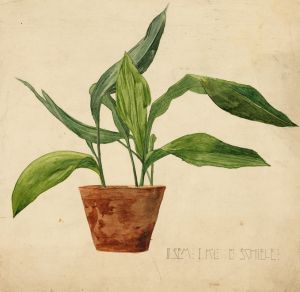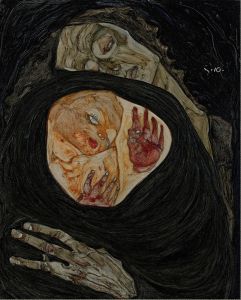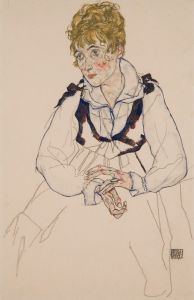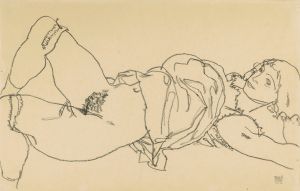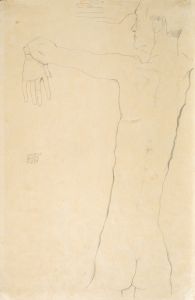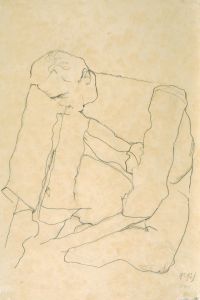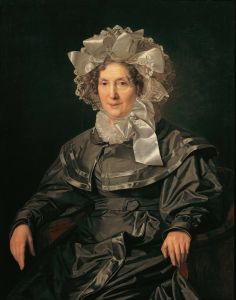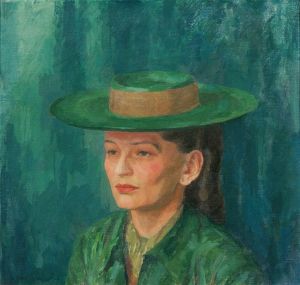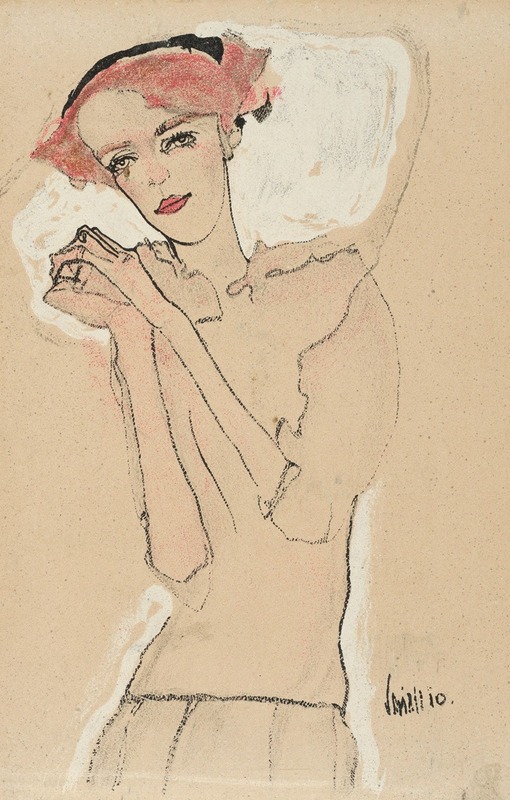
Portrait of a Woman
A hand-painted replica of Egon Schiele’s masterpiece Portrait of a Woman, meticulously crafted by professional artists to capture the true essence of the original. Each piece is created with museum-quality canvas and rare mineral pigments, carefully painted by experienced artists with delicate brushstrokes and rich, layered colors to perfectly recreate the texture of the original artwork. Unlike machine-printed reproductions, this hand-painted version brings the painting to life, infused with the artist’s emotions and skill in every stroke. Whether for personal collection or home decoration, it instantly elevates the artistic atmosphere of any space.
Egon Schiele, an Austrian painter known for his distinctive style and contribution to early 20th-century art, created "Portrait of a Woman" in 1910. Schiele was a protégé of Gustav Klimt and a major figurative painter of the early 20th century. His work is noted for its intensity and raw sexuality, and the many self-portraits he produced are characterized by their twisted body shapes and expressive line work.
"Portrait of a Woman" exemplifies Schiele's unique approach to portraiture, which often involved capturing the psychological depth and emotional state of his subjects. The painting reflects Schiele's fascination with the human form and his ability to convey complex emotions through his art. His portraits are often marked by a stark, almost skeletal depiction of the human figure, which is evident in this work.
The subject of "Portrait of a Woman" is depicted with Schiele's characteristic elongated limbs and angular features, which contribute to the overall sense of tension and unease that pervades much of his work. The use of color in the painting is both bold and subtle, with a palette that emphasizes the emotional intensity of the subject. Schiele's technique often involved the use of gouache and watercolor, which allowed him to achieve a fluidity and transparency in his work that is evident in this portrait.
Schiele's portraits often went beyond mere representation, delving into the psychological and emotional states of his subjects. This approach was part of a broader movement in early 20th-century art that sought to explore the inner workings of the human psyche, influenced by contemporary developments in psychology and philosophy. Schiele's work, including "Portrait of a Woman," is often seen as a reflection of the existential anxieties and uncertainties of the time.
The painting is also notable for its composition and the way Schiele uses space. The subject is often placed against a minimal or abstract background, which serves to highlight the figure and draw the viewer's attention to the emotional expression and physical form of the subject. This technique is a hallmark of Schiele's work and contributes to the intense focus on the individual in his portraits.
Egon Schiele's career was tragically cut short when he died in 1918 at the age of 28, a victim of the Spanish flu pandemic. Despite his brief career, Schiele left behind a significant body of work that continues to be celebrated for its emotional depth and innovative approach to the human form. "Portrait of a Woman" remains an important example of his contribution to modern art and his ability to capture the complexities of human emotion and identity.
Today, Schiele's works are held in high regard and are featured in major art collections and exhibitions worldwide. His influence can be seen in the work of later artists who have drawn inspiration from his bold style and psychological insight. "Portrait of a Woman" stands as a testament to Schiele's enduring legacy and his unique vision as an artist.





